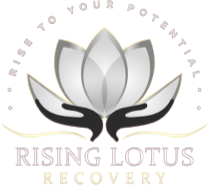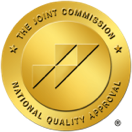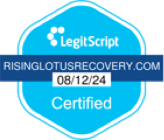The decision to enter rehab is a powerful act of courage, especially when facing withdrawal from substances like benzodiazepines or opioids. These substances can cause intense physical and psychological dependence, making it not only difficult but potentially dangerous to attempt quitting on your own. This is where medication-assisted treatment (MAT) can play a life-saving role during detox and recovery.
Medication-assisted treatment (MAT) helps by easing symptoms, reducing cravings, and making detox safer and more manageable. By combining medication with therapy, MAT supports long-term recovery with a more stable foundation.
What Is Medication-Assisted Treatment (MAT)?
MAT is a clinical approach that uses FDA-approved medications, alongside therapy and medical supervision, to treat substance use disorders. The goal is to support brain chemistry during detox, reduce cravings, and help people focus on the emotional and behavioral work of recovery.
Common Medications Used in MAT
- Methadone: A long-acting opioid agonist that reduces cravings and withdrawal without creating a “high.”
- Buprenorphine (Suboxone, Subutex): Partial opioid agonists that ease withdrawal and cravings with a lower risk of misuse.
- Naltrexone: An opioid antagonist that blocks the effects of opioids and alcohol, helping prevent relapse.
- Acamprosate and disulfiram: Often used in alcohol use disorder to reduce cravings and deter drinking.
- Benzodiazepine tapers: Used in a controlled, decreasing dosage to help those withdrawing from long-term benzo use.
These medications are prescribed and monitored by medical professionals, and they’re not one-size-fits-all. Your MAT plan will be tailored to your individual needs, substance history, and goals.
Why Going “Cold Turkey” Can Be Dangerous
People often imagine detox as simply stopping the substance and letting the body “ride it out.” While this may be true for some drugs, abruptly stopping substances like alcohol, benzodiazepines, or opioids can cause life-threatening withdrawal symptoms.
- Alcohol and benzodiazepines affect the central nervous system. Without gradual tapering or medical support, stopping these substances can lead to seizures, hallucinations, and even cardiac complications.
- Fentanyl and other opioids carry a high risk of severe withdrawal symptoms such as vomiting, muscle pain, anxiety, and dangerously low blood pressure. While not usually fatal, the intensity of symptoms often leads to relapse if proper support isn’t provided.
MAT offers a way to step down safely. Medications can ease withdrawal symptoms, protect against medical complications, and create a more stable foundation for healing.
The Benefits of MAT in Detox & Rehab
Safer Detoxification
The number 1 benefit of MAT is safety. It helps reduce the risk of complications during withdrawal, especially for substances like alcohol or benzos, where abrupt cessation can be life-threatening. For opioids like fentanyl, MAT allows patients to detox without the crushing discomfort that often leads to early relapse.
Lower Risk of Relapse
MAT reduces cravings and withdrawal symptoms, which are major triggers for relapse. With a clearer mind and more physical comfort, patients can engage more deeply in therapy and other parts of their recovery program.
Improved Long-Term Outcomes
Studies have shown that people who participate in MAT are more likely to complete treatment and maintain long-term sobriety compared to those who do not. MAT supports brain function and allows for healing to begin in a more manageable, sustainable way.
Stigma-Free Support
MAT is not a shortcut or “cheating.” It’s a medically recognized form of care endorsed by the Substance Abuse and Mental Health Services Administration (SAMHSA), the CDC, and addiction professionals worldwide. When combined with counseling, it offers a holistic and compassionate pathway to recovery.
Can MAT Cause Pain or Discomfort?
It’s natural to wonder whether starting MAT, especially during your first visit or detox phase, could cause discomfort. The answer depends on the substance and your body’s response. Some people may experience mild side effects such as nausea, headaches, or fatigue as their body adjusts. However, these symptoms are closely monitored by a clinical team and are typically far less severe than unmanaged withdrawal.
If you’re transitioning from 1 medication to another—like switching from fentanyl to buprenorphine—your medical team may time the induction carefully to minimize discomfort. The goal of MAT is to reduce pain and distress, not create more.

MAT Is Just 1 Part of a Comprehensive Plan
It’s important to understand that MAT isn’t a standalone solution. It’s most effective when used alongside:
- Individual and group therapy
- Mental health support
- Lifestyle counseling
- Holistic care like yoga, nutrition, and mindfulness
MAT provides the stability needed to fully engage in these areas. It doesn’t replace therapy or healing work—it supports it.
Choosing MAT at Rising Lotus Recovery
At Rising Lotus Recovery in North Hollywood, we understand that no 2 recovery journeys are the same. Many of our clients come to us after struggling to detox at home—or fearing the pain and dangers of doing so. That’s why we offer MAT as part of our medically supervised detox and rehab programs.
Our team of physicians, nurses, and therapists work closely with each client to determine the right medication strategy, monitor progress, and provide compassionate care every step of the way. Whether you’re dealing with opioid addiction, alcohol dependency, or benzodiazepine misuse, MAT can help you detox safely and begin your recovery journey with clarity and support.
If you or a loved one is considering treatment but feeling overwhelmed by the idea of detox, you don’t have to face it alone. Reach out to our team today to learn how MAT can make your path to recovery safer and more manageable.




























